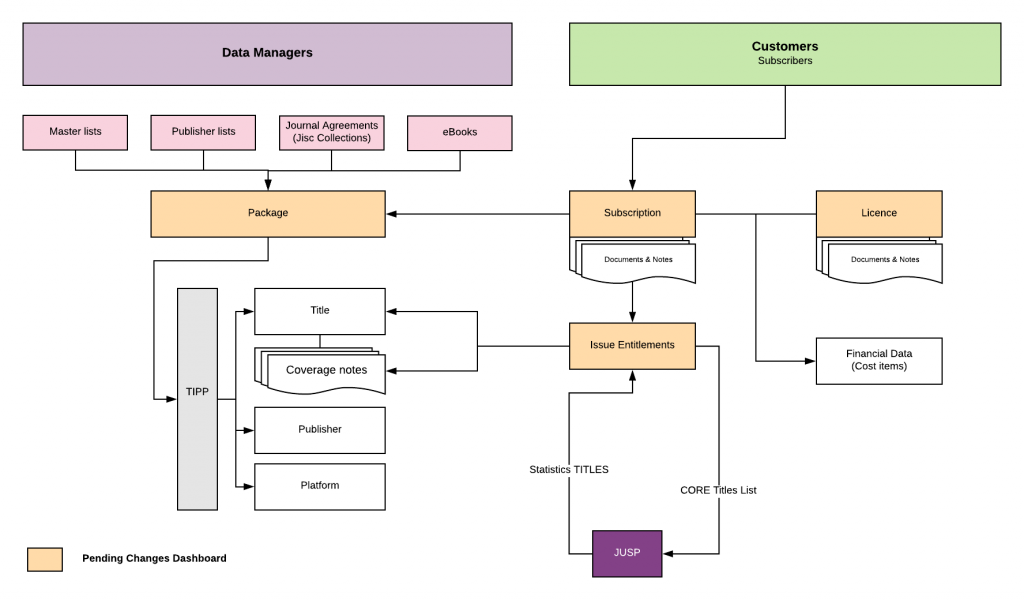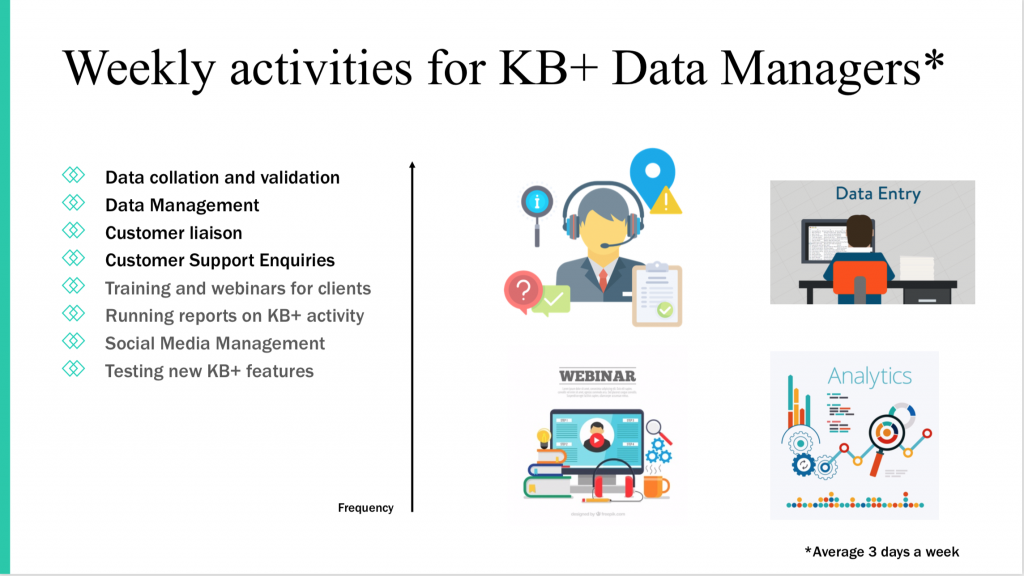Knowledge Base+ (KB+), provided by Jisc, is a shared community service to help UK academic libraries manage their electronic resources more efficiently. It is managed by a team of Data Managers, who help customers keep data current and accurate, as well as providing other customer support.
Jisc wanted to see what could be done to optimise the service, so they commissioned a research study to review KB+, from a technical perspective and from the point of view of Data Managers working on the system. They wanted to understand how they work, what activities they carry out to manage data in the KB+ system, and map out an overview to gain perspective and identify opportunities for improvements to KB+, from documentation to improving tools and workflows.
Research
I began with an onboarding to the KB+ system, given by the Service Manager, and then received documentation pertaining to different aspects of using KB+, to familiarise ourselves with the overall subject domain.
I then interviewed a number of Data Managers either remotely or in a more contextual setting. I asked a series of questions, and got the participants to step through some common tasks in the system, to gain qualitative feedback around the interface and processes used.

I also discussed how they understand their work on a conceptual level, rather than just systemic. I drew timelines, talked about challenges they face, and discovered what mechanisms they may have to overcome gaps in the current user experience.

It’s always really interesting to discover the work setups and workarounds that people use to overcome challenges at work – not something you can discover easily using surveys or only remote user testing.
Producing a Service Blueprint
I analysed this data and defined 10 key insights which highlighted the data managers’ pain-points and described the implications for the business. These insights spanned across issues relating to usability and efficiency all the way to data maintenance and quality. At the back of each finding I also provided a set of recommendations to address them.

These findings were presented in a Service Blueprint. A Service Blueprint is a visual document similar to a user journey map but goes further by describing the interaction points between people and internal/back-office processes.

This Service Blueprint gave Jisc a comprehensive understanding of the KB+ service and the underlying resources and processes — seen and unseen to the user — that make it possible. It tells the story of how data managers are working to create valuable services for KB+ subscribers.
The blueprint provided Jisc with additional benefits for the longer term such as:
- Opportunities for optimisation — the visualisation of relationships in the blueprints uncovered potential improvements and ways to eliminate redundancy
- Bridging the organisation’s and suppliers’ efforts — the blueprint provided a clear picture where the overlaps and dependencies existed between internal departments and external suppliers
- Discovering potential shortcomings that could cause systematic issues
Fundamentally, the Service Blueprint was then used as a central document which visually listed all the pieces of the service and linked to the more focused documentation resources. It brings together a complex series of tasks and processes together into a format that was easier to understand and to get a clearer view of the big picture for the stakeholders at Jisc.
This has allowed Jisc to take these findings and share them with the wider team, to feed into the future product roadmap.

